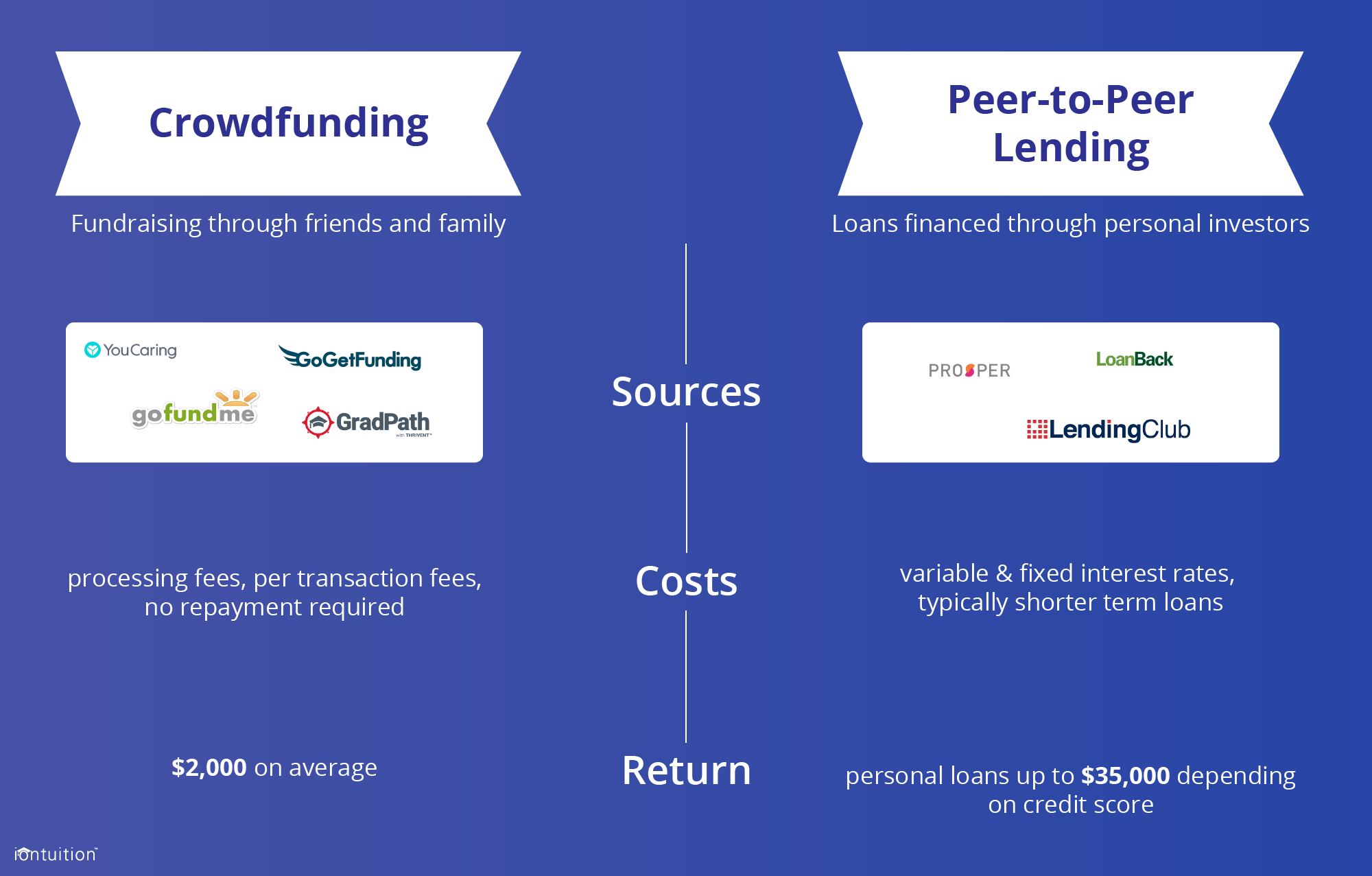In the world of finance, crowdfunding and peer-to-peer lending have gained significant traction in recent years. While both methods involve raising funds from multiple individuals, they differ in key aspects.

Credit: www.iontuition.com
The Basics
| Crowdfunding | Peer-to-Peer Lending |
|---|---|
| Multiple individuals contribute small amounts of money towards a project or cause. | Individuals lend money directly to other individuals or businesses, bypassing traditional financial institutions. |
| Usually used for creative projects, charitable causes, or startups. | Primarily used for personal loans, business loans, or real estate financing. |
Key Differences
- Crowdfunding involves donations or rewards, while peer-to-peer lending involves loans with the expectation of repayment with interest.
- Crowdfunding backers receive non-financial rewards, such as products or experiences, while peer-to-peer lenders expect financial returns.
- Crowdfunding campaigns may have goals that, if not met, result in no funds being collected, whereas peer-to-peer lending usually guarantees funds disbursement upon approval.

Credit: www.excelcapmanagement.com
Benefits and Risks
Both crowdfunding and peer-to-peer lending offer unique advantages and risks for participants.
Crowdfunding Benefits
- Access to capital without accruing debt
- Engagement with supporters and potential customers
- Potential for wider exposure and marketing opportunities
Crowdfunding Risks
- No guarantee of financial return
- Possible failure to meet funding goals
- Risk of intellectual property theft or competition imitation
Peer-to-peer Lending Benefits
- Potential for higher returns compared to traditional investments
- Diversification of investment portfolio
- Control over lending decisions
Peer-to-peer Lending Risks
- Risk of borrower default and loss of principal
- Dependency on borrower creditworthiness
- Potential for regulatory changes affecting lending operations
Regulatory Environment
Both crowdfunding and peer-to-peer lending are subject to regulatory oversight to protect investors and borrowers.
Frequently Asked Questions For What Is The Difference Between Crowdfunding And Peer To Peer Lending?
What Is Crowdfunding And How Does It Work?
Crowdfunding is a funding method that allows individuals to raise money for a project or venture by pooling small amounts of money from a large number of people, typically via the internet.
How Is Peer To Peer Lending Different From Crowdfunding?
Peer to Peer Lending is a method of lending money to individuals or businesses through online platforms that connect borrowers with lenders directly, bypassing traditional financial institutions.
Is Crowdfunding Better Than Peer To Peer Lending?
The choice between Crowdfunding and Peer to Peer Lending depends on various factors such as the purpose of the funding, the level of control desired, and the level of risk tolerance.
Which Option Offers Better Returns: Crowdfunding Or Peer To Peer Lending?
The returns on Crowdfunding and Peer to Peer Lending can vary depending on the specific project or loan. It is important to carefully evaluate the risks and potential returns before making a decision.
Conclusion
While crowdfunding and peer-to-peer lending share the common goal of connecting individuals for financial transactions, the differences in their mechanisms and outcomes make each option suitable for specific purposes. Understanding these distinctions can help individuals make informed decisions when seeking or providing financial support.
